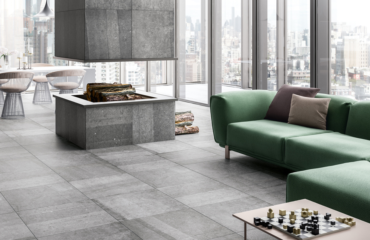Tiles are one of the most practical ways to preserve your floors while also adorning your walls. Tiles are no longer limited to the kitchen and bathroom, they are now an essential aspect of our home décor. They are extremely durable, come in a variety of colors and patterns, and are simple to care for. Yet, no matter how simple it appears to clean tiles, they accumulate dust, become damaged with time, or acquire a coating of soap scum.
To assist you in cleaning and maintenance of tiles in commercial settings, here are some key considerations for cleaning four tile types you may encounter in your facility: Ceramic Tiles, Natural Stones, Glazed Vitrified Tiles, Non-slip tiles.
These elements will arm you with the information you need to battle persistent filth and undertake daily maintenance on tiled areas in your facility to increase cleanliness, durability, and longevity.
1. Ceramic Tiles
The ceramic tiles are an investment that will give you many years of enjoyment. These tiles are the most prevalent type of tile used in many areas of homes and businesses. If you’re looking for ways to clean ceramic tiles, look no further! Ceramic tiles have a protective shine and rank high on the tile low-maintenance scale.
- Sweeping, followed by mopping with a soft cloth soaked in mild detergent and warm water, is all that is required to keep them in good condition.
- It is also important to understand how to make surfaces shine in addition to knowing how to clean and preserve tiles. To add shine to your tiles, mop with vinegar or fresh lemon juice mixed with warm water.
2. Natural Stones
Natural stone tiles are both a beautiful and costly flooring investment, therefore it is critical that the correct cleaning products and methods be utilized to care for them. And simple care and upkeep will help keep the stone’s beauty for future generations.
- Ammonia and bleach are common home cleaners that can damage stone tile. Using natural solutions and methods on your stone flooring ensures that its beauty is not only maintained but also enhanced.
- Select a high-quality detergent that is specifically formulated for use on all varieties of natural stone. Standard cleaning products may be overly acidic, removing the sealant layer or causing damage to the stone itself.
- Choosing cleaning products containing linseed oil ensures that they are suitable for fragile surfaces.
3. Glazed Vitrified Tiles

Glazed vitrified tiles, like ceramic tiles, are protected by a layer of glaze. Their upkeep includes regular sweeping and cleaning, and it is best to clean glazed vitrified tiles right once if there are any stains or spills.
- One vital step is to scrub and clean the grout lines with a brush dipped in a solution of equal parts baking soda and water.
- One thing that should be kept in mind is that you should never use steel wool to scrub and clean tiled floors because it might leave permanent scratches on the tiles.
4. Non-Slip Tiles

Non Slip tiles necessitate extra attention. Because of their anti-slip qualities, the surface isn’t perfectly smooth and can hold more dirt than ordinary tiles. To the inexperienced, opting for an industrial-strength detergent to work on this dirt may be your first inclination, since light cleaners may not be able to cut through the grease and grime. However, this is not the case; powerful chemicals may harm the tile’s integrity and non slip qualities.
- To remove surface soil, sweep or vacuum the floor, dampen it down by putting a little amount of h20 on the floor tiles, and lightly walk it around with a soft bristles brush. Then, choose a natural cleaner with a neutral ph. Instead of using strong chemical-based cleaners such as bleach to clean the surface area.
These are important pointers that should help you figure out how to clean tiles at home. This tile maintenance book is the bible of clean and shiny surfaces, with ideas on how to clean bathroom tiles, kitchen tiles, office tiles, etc.









